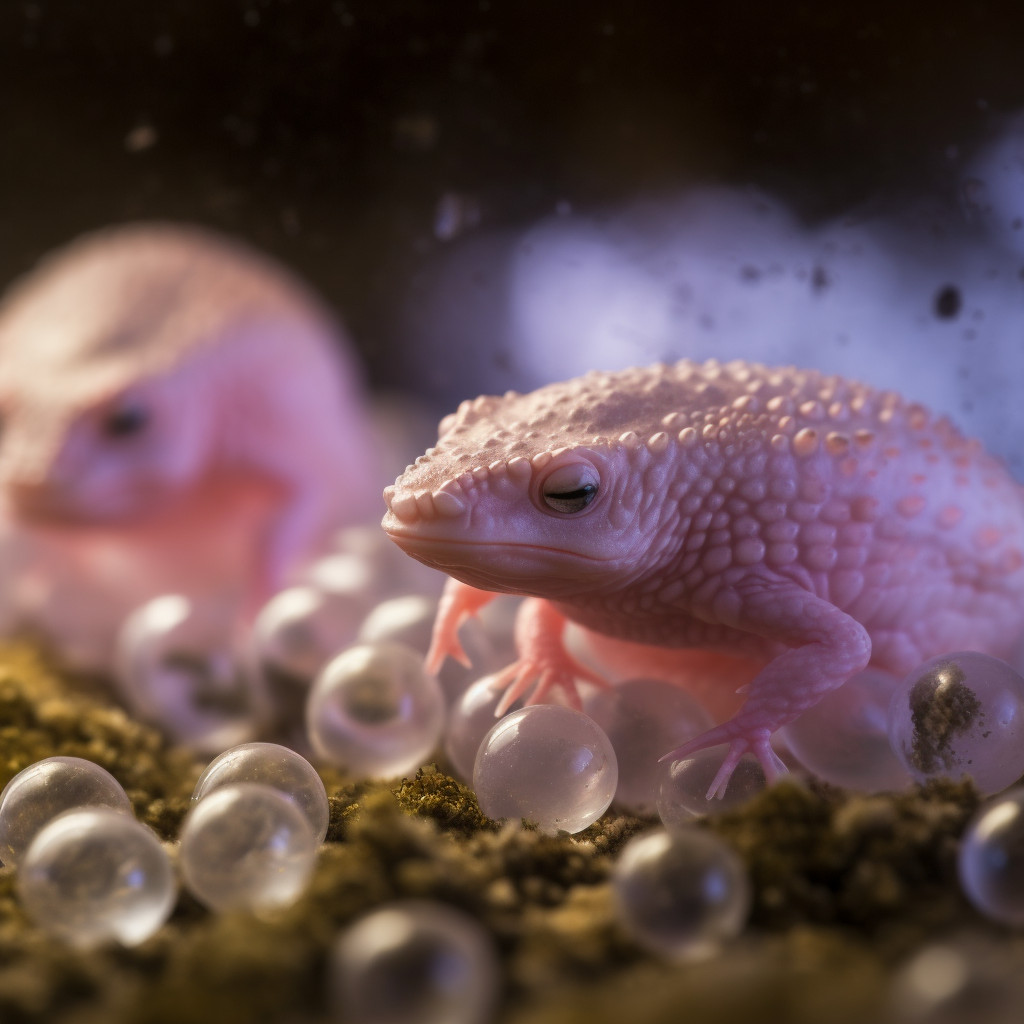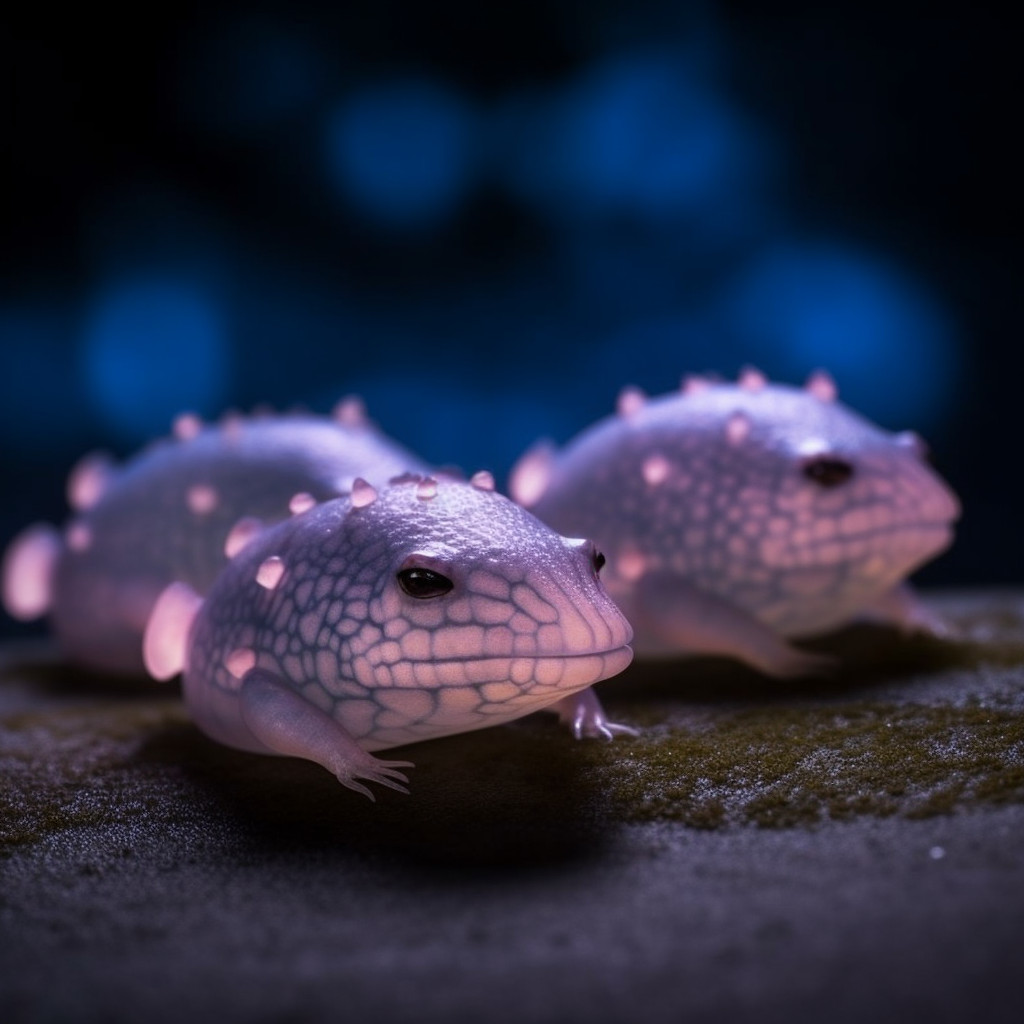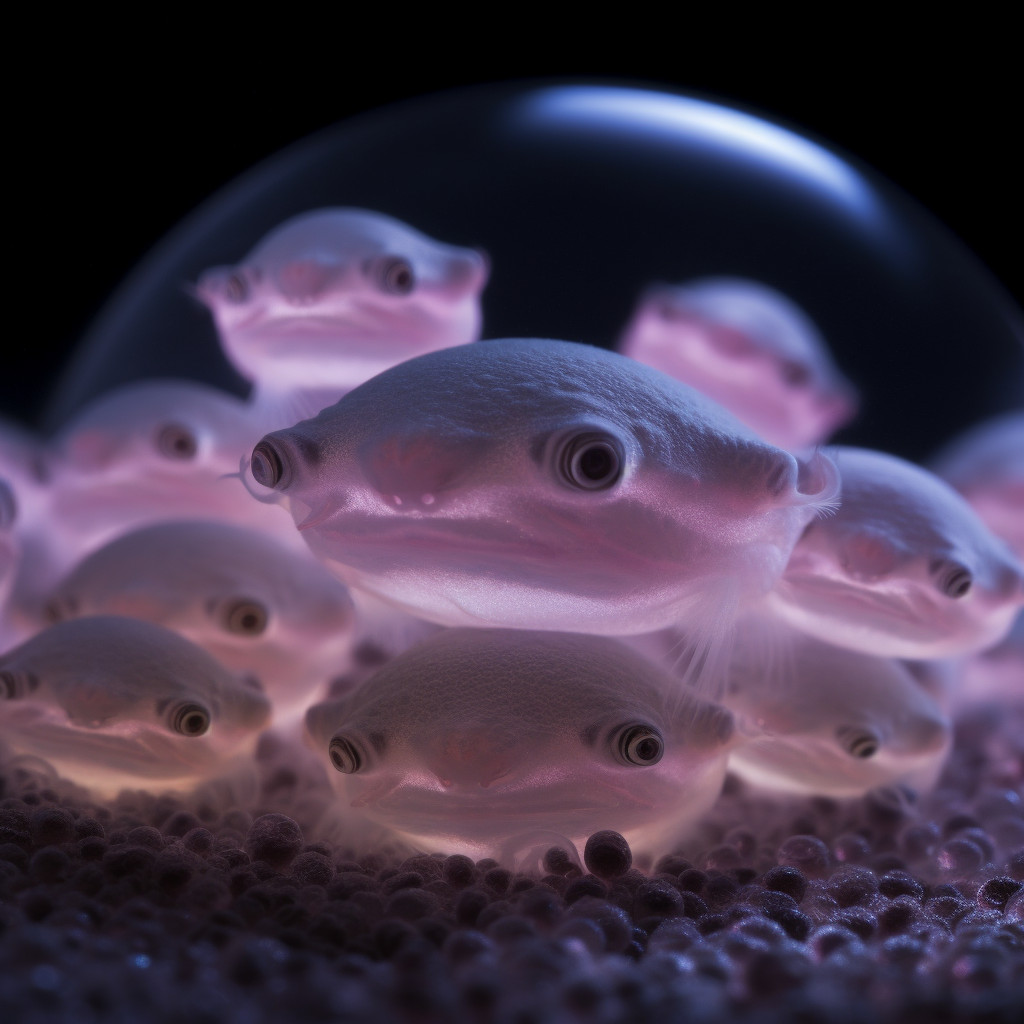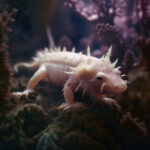Axolotls are fascinating creatures that have captivated the hearts of many reptile enthusiasts. These unique amphibians are known for their regenerative abilities and their adorable appearance. If you’re interested in breeding axolotls, one of the most exciting parts of the process is hatching their eggs. Watching these tiny embryos develop into fully formed axolotls is a truly rewarding experience. In this article, we will guide you through the process of hatching axolotl eggs, from preparing the breeding tank to caring for the hatchlings. So, let’s dive in and discover the wonders of axolotl egg hatching!
Key Takeaways
- Provide a suitable environment for axolotl eggs, including a clean tank with proper water conditions and temperature.
- Use a gentle filtration system to keep the water clean and oxygenated.
- Avoid handling the eggs as much as possible to prevent damage.
- Maintain a consistent temperature between 16-18°C (60-64°F) for optimal hatching.
- Feed the hatched axolotls with small live or frozen foods to ensure their proper growth and development.
Understanding Axolotl and Their Reproduction
A. The Fascinating World of Axolotls
Axolotls are unique creatures that have captivated the attention of many due to their extraordinary features and abilities. These fascinating amphibians are native to Mexico and are often referred to as “Mexican walking fish,” although they are not fish at all. In fact, axolotls are a type of salamander, specifically known as Ambystoma mexicanum.
One of the most intriguing aspects of axolotls is their ability to regenerate body parts. Unlike most animals, axolotls can regrow limbs, spinal cords, and even parts of their heart and brain. This remarkable regenerative ability has made them a subject of interest for scientists studying tissue regeneration and potential medical applications.
Axolotls also possess unique physical characteristics. They have external gills that resemble feathery tufts on the sides of their heads, which they use to extract oxygen from the water. Their bodies are elongated and slender, with a flat head and small eyes. Axolotls come in various colors, including wild-type (dark brown with speckles), albino (pink with red eyes), and a range of other morphs with different color patterns.
B. Axolotl Reproduction: A Brief Overview
Axolotls have a fascinating reproductive process that involves laying eggs and hatching them into larvae. Understanding the basics of axolotl reproduction is essential for anyone interested in breeding these unique creatures.
-
Breeding Cycle: Axolotls typically reach sexual maturity between 12 to 18 months of age. However, it’s important to note that not all axolotls will breed, as some may remain in their larval form indefinitely. Breeding usually occurs during the colder months, as axolotls require a drop in temperature to trigger the reproductive cycle.
-
Egg Laying: Female axolotls lay their eggs in clusters, attaching them to plants or other surfaces in the water. The number of eggs can vary significantly, ranging from a few dozen to several hundred. It’s crucial to provide suitable surfaces or structures for the female axolotl to lay her eggs on, such as aquatic plants or artificial spawning sites.
-
Egg Incubation: Once the eggs are laid, they require specific conditions to develop and hatch successfully. The eggs are delicate and need to be handled with care to avoid damage. Maintaining the right temperature and water quality is crucial for the eggs’ development. It’s recommended to use a separate container or aquarium for incubating the eggs, as this allows better control over the environmental conditions.
-
Parental Care: Unlike many other amphibians, axolotls do not exhibit parental care towards their eggs or larvae. The adults may accidentally eat the eggs, so it’s essential to separate them from the eggs after laying. Additionally, axolotls are known to cannibalize their own offspring, so it’s crucial to provide ample space and separate containers to ensure the survival of the hatchlings.
-
Egg Hatching: The time it takes for axolotl eggs to hatch can vary depending on various factors, including temperature and water quality. On average, it takes around 10 to 14 days for the eggs to hatch into larvae. During this time, it’s important to monitor the water temperature and maintain optimal conditions for the eggs’ development.
Understanding the basics of axolotl reproduction is the first step towards successfully hatching axolotl eggs. By providing the right conditions and ensuring proper care, you can witness the incredible journey from egg to larvae and experience the wonder of these unique creatures‘ life cycle.
The Axolotl Breeding Process

Breeding axolotls can be a fascinating and rewarding experience. Watching the eggs hatch and witnessing the growth of these unique creatures is truly captivating. However, it’s important to understand the breeding process and provide the right conditions for successful hatching. In this section, we will explore the key aspects of the axolotl breeding process, including identifying breeding signs and ensuring a safe environment for breeding.
A. Identifying Axolotl’s Breeding Signs
Before you can start the breeding process, it’s crucial to identify the signs that indicate your axolotls are ready to breed. Here are some common signs to look out for:
-
Matured Axolotls: Ensure that your axolotls have reached sexual maturity, which typically occurs around 18 months to 2 years of age. At this stage, they will have fully developed reproductive organs.
-
Physical Changes: Male axolotls may develop swollen cloacas, while females may have a wider body and a more pronounced cloaca. Additionally, males may exhibit a behavior known as “jousting,” where they push against each other with their snouts.
-
Courtship Behavior: Axolotls engage in courtship rituals before breeding. This includes the male performing a “dance” to attract the female‘s attention. The male may also deposit spermatophores, which are small packets of sperm, on various surfaces in the tank.
-
Egg-Laying Behavior: Female axolotls will lay their eggs on plants, rocks, or any other available surfaces. They may also exhibit a “curling” behavior, where they wrap their bodies around the eggs to protect them.
By observing these signs, you can determine when your axolotls are ready to breed and take the necessary steps to provide a suitable breeding environment.
B. Ensuring a Safe Environment for Breeding
Creating a safe and conducive environment is crucial for the successful hatching of axolotl eggs. Here are some key factors to consider:
-
Water Quality: Maintaining optimal water quality is essential. Regularly test the water parameters such as temperature, pH, ammonia, nitrate, and nitrite levels. Axolotls prefer cooler water temperatures, ideally between 16-18°C (60-64°F). Use a reliable aquarium thermometer to monitor the temperature consistently.
-
Separate Breeding Tank: It’s recommended to set up a separate breeding tank to provide a controlled environment for the eggs. This will prevent the eggs from being eaten by adult axolotls or other tank mates. The breeding tank should be spacious enough to accommodate the axolotls comfortably.
-
Substrate and Hiding Places: Use a substrate that is safe for axolotls, such as smooth gravel or sand. Provide plenty of hiding places, such as rocks, plants, or PVC pipes, where the axolotls can lay their eggs and seek shelter.
-
Water Flow: Axolotl eggs require gentle water flow to ensure proper oxygenation. Consider using a sponge filter or an air stone to create a gentle current in the breeding tank. Avoid strong water currents that can dislodge or damage the eggs.
-
Monitoring and Maintenance: Regularly monitor the breeding tank for any signs of disease or stress. Perform partial water changes to maintain water quality and remove any uneaten food or waste. Ensure that the tank is well-maintained and free from any potential hazards.
By providing a safe environment with optimal water conditions, you can increase the chances of successful hatching and ensure the well-being of both the adult axolotls and their offspring.
In the next section, we will delve into the crucial aspects of axolotl egg care and incubation, which are vital for the healthy development of the embryos.
The Journey of Axolotl Eggs

A. The Laying of Axolotl Eggs
Axolotls, also known as Mexican walking fish, are fascinating creatures that go through a unique reproductive process. Unlike most amphibians, axolotls do not undergo metamorphosis and remain in their aquatic larval form throughout their lives. This means that they do not lay eggs in the traditional sense, but rather deposit clusters of eggs that are attached to various surfaces in their environment.
When an axolotl is ready to lay eggs, it will typically search for a suitable spot to attach them. This can include plants, rocks, or even the walls of the tank. The female axolotl will lay her eggs in a gel-like substance that helps to protect and nourish them during their development.
B. The Number of Eggs an Axolotl Can Lay
The number of eggs an axolotl can lay varies depending on several factors, including the age and size of the female. On average, a healthy adult female axolotl can lay anywhere from 100 to 1,000 eggs in a single breeding cycle. However, it is important to note that not all of these eggs will necessarily hatch successfully.
The process of laying eggs can be physically demanding for the female axolotl, and she may require some time to recover before being able to lay another batch. It is essential to provide the axolotl with a stress-free environment and a balanced diet to ensure her overall health and reproductive success.
To maximize the chances of successful hatching, it is recommended to separate the eggs from the adult axolotls and provide them with the necessary conditions for incubation. This allows for better control over the environment and reduces the risk of the eggs being eaten or damaged by the parents or other tank mates.
In the next section, we will explore the various stages of axolotl egg development and the factors that contribute to successful hatching.
The Incubation Period of Axolotl Eggs
Axolotls, with their unique appearance and fascinating life cycle, have become popular pets among amphibian enthusiasts. If you’re interested in breeding axolotls, understanding the incubation period of their eggs is crucial. In this section, we will explore the importance of incubation, the duration it takes for axolotl eggs to hatch, and the factors that can affect the incubation period.
A. The Importance of Incubation
Incubation plays a vital role in the development and survival of axolotl eggs. During this period, the eggs undergo various stages of growth and transformation, ultimately leading to the emergence of tiny axolotl larvae. Proper incubation conditions provide the necessary environment for the eggs to develop and hatch successfully.
One of the key aspects of incubation is maintaining the right temperature. Axolotl eggs require a specific temperature range to ensure optimal development. If the temperature is too low, the eggs may take longer to hatch, or in some cases, fail to hatch at all. Conversely, if the temperature is too high, it can lead to developmental abnormalities or even the death of the embryos.
B. How Long Does It Take for Axolotl Eggs to Hatch?
The duration of the incubation period can vary depending on several factors, including the temperature, water quality, and genetic factors. On average, axolotl eggs take around 14 to 21 days to hatch. However, it’s important to note that this timeframe is an estimate and can vary from clutch to clutch.
Monitoring the eggs closely during the incubation period is crucial. As the eggs develop, you may notice changes in their appearance. Initially, the eggs will be translucent and have a jelly-like consistency. As they near hatching, you may observe the embryos becoming more visible, with the eyes and gills becoming apparent.
C. Factors Affecting the Incubation Period
Several factors can influence the duration of the incubation period for axolotl eggs. Let’s take a closer look at some of these factors:
-
Temperature: As mentioned earlier, temperature plays a significant role in the incubation process. Axolotl eggs typically hatch faster in warmer temperatures, while cooler temperatures can prolong the incubation period. It’s crucial to maintain a stable temperature within the recommended range to ensure successful hatching.
-
Water Quality: The quality of the water in which the eggs are incubated can impact their development. Clean, well-filtered water with appropriate levels of dissolved oxygen is essential for the health of the embryos. Regular water changes and monitoring of water parameters such as pH and ammonia levels are necessary to maintain optimal conditions.
-
Genetics: Genetic factors can also influence the incubation period. Different axolotl morphs may have variations in their development time. Additionally, the genetics of the parent axolotls can affect the growth and development of the embryos.
-
Egg Fertilization: Fertilized eggs have a higher chance of successful hatching compared to unfertilized ones. Ensuring proper mating and fertilization between the parent axolotls is crucial for healthy egg development.
By understanding these factors and providing the appropriate conditions, you can increase the chances of successful hatching and the overall health of the axolotl larvae.
In the next section, we will delve into the various stages of axolotl egg development, providing you with a comprehensive understanding of the fascinating journey from egg to larva.
How to Hatch Axolotl Eggs: A Step-by-Step Guide

A. Preparing for the Hatch: What You Need
Before you embark on the exciting journey of hatching axolotl eggs, it’s important to make sure you have everything you need to create a suitable environment for the eggs to develop and hatch successfully. Here’s a step-by-step guide to help you prepare:
-
Aquarium Setup: Start by setting up a spacious aquarium that will accommodate the growing axolotl larvae. A 10-gallon tank is usually sufficient for a small batch of eggs. Make sure the tank is clean and free from any contaminants.
-
Water Quality: Axolotl eggs require clean and well-oxygenated water to thrive. Use a water conditioner to remove any chlorine or other harmful chemicals from tap water. Maintain a pH level between 6.5 and 8.0, and keep the water temperature around 18-20°C (64-68°F).
-
Substrate: Provide a suitable substrate for the eggs to attach to. You can use marbles, smooth rocks, or artificial plants to create a stable surface. Avoid using gravel or any rough materials that may damage the delicate eggs.
-
Egg Containers: To prevent the eggs from being eaten by adult axolotls or getting damaged, it’s essential to separate them from the parents. You can use plastic containers or floating mesh breeders to keep the eggs safe and secure.
-
Lighting: Axolotl eggs require a consistent light-dark cycle to develop properly. Provide a low-intensity light source, such as a desk lamp or aquarium light, for around 12 hours a day. This will mimic the natural day-night cycle and promote healthy egg development.
B. Monitoring the Eggs During Incubation
Once you have set up the ideal environment for the axolotl eggs, it’s crucial to monitor them closely during the incubation period. Here are some important steps to follow:
-
Egg Fertilization: Before the eggs can hatch, they need to be fertilized. This occurs when the male axolotl releases sperm, and the female axolotl lays her eggs. Make sure you have a male and female axolotl in the breeding tank to ensure successful fertilization.
-
Egg Development: Axolotl eggs typically take around 10-14 days to hatch, depending on the temperature and other environmental factors. During this time, it’s important to observe the eggs regularly. Look for any signs of fungus growth or discoloration, as these can indicate poor egg health.
-
Water Quality Maintenance: Regularly test the water parameters to ensure they remain within the optimal range. Monitor the pH level, ammonia, nitrite, and nitrate levels to maintain a healthy environment for the developing eggs. Perform partial water changes if necessary to keep the water clean and oxygenated.
-
Egg Rotation: Gently rotate the eggs every few days to prevent them from sticking to the substrate. This will ensure proper oxygenation and prevent deformities in the developing larvae.
C. Handling the Hatch: What to Do When Eggs Start to Hatch
The moment you’ve been waiting for has arrived – the axolotl eggs are starting to hatch! Here’s what you should do to ensure a smooth transition for the newly hatched larvae:
-
Separation: As soon as the eggs start to hatch, carefully transfer the larvae to a separate container filled with fresh, dechlorinated water. Use a soft net or a turkey baster to gently scoop them up, taking care not to damage their delicate bodies.
-
Feeding: Axolotl larvae are initially nourished by their yolk sacs, but they will soon require external food. Start feeding them with newly hatched brine shrimp or commercially available axolotl food. Offer small, bite-sized pieces to prevent overfeeding and maintain good water quality.
-
Water Conditions: Continue to monitor and maintain the water parameters in the larval container. Keep the temperature between 18-20°C (64-68°F) and perform regular water changes to remove any waste or uneaten food.
-
Growth and Development: As the axolotl larvae grow, they will undergo various developmental stages. Provide them with ample space and hiding spots, such as plants or PVC pipes, to promote their natural behaviors and ensure their well-being.
Remember, hatching axolotl eggs requires patience and careful attention to detail. By following these steps and providing the necessary care, you can increase the chances of successfully hatching and raising healthy axolotl larvae.
Common Challenges in Hatching Axolotl Eggs
A. Identifying Unfertilized and Bad Eggs
When hatching axolotl eggs, it is important to be able to identify unfertilized and bad eggs. This will help ensure the health and survival of the remaining eggs and the hatchlings. Here are some tips on how to identify these eggs:
-
Unfertilized Eggs: Unfertilized eggs are eggs that have not been fertilized by the male axolotl. These eggs will not develop and will remain unchanged in appearance. They will typically be white or clear and may have a cloudy or opaque appearance. Unfertilized eggs can be removed from the incubation container to prevent them from rotting and potentially harming the other eggs.
-
Bad Eggs: Bad eggs are eggs that have been fertilized but are not developing properly. These eggs may appear discolored, have a foul odor, or have a slimy texture. They may also have mold or fungus growing on them. Bad eggs should be removed from the incubation container as they can contaminate the water and affect the health of the other eggs.
It is important to regularly inspect the eggs during the incubation period to identify any unfertilized or bad eggs. Removing these eggs promptly will help maintain the overall health of the remaining eggs and increase the chances of successful hatching.
B. Dealing with Common Problems During Incubation
Incubating axolotl eggs can sometimes come with its own set of challenges. Here are some common problems that may arise during the incubation process and how to deal with them:
-
Water Quality: Maintaining good water quality is crucial for the development of axolotl eggs. Poor water quality can lead to the growth of harmful bacteria or fungi, which can negatively impact the eggs. Regularly test the water parameters such as pH, temperature, and ammonia levels to ensure they are within the appropriate range for axolotl egg incubation. Regular water changes and the use of a water conditioner can help maintain optimal water quality.
-
Temperature Fluctuations: Axolotl eggs require a stable temperature for proper development. Fluctuations in temperature can disrupt the development process and even lead to the death of the embryos. Use a reliable aquarium heater or a dedicated egg incubator to maintain a consistent temperature throughout the incubation period. Aim for a temperature range of around 18-20°C (64-68°F) for optimal egg development.
-
Fungal Growth: Fungal growth on axolotl eggs is a common problem during incubation. This can be caused by poor water quality or inadequate egg handling. To prevent fungal growth, ensure that the eggs are kept in clean water and avoid excessive handling. If fungal growth does occur, gently remove the affected eggs and treat them with an antifungal solution recommended for use with amphibian eggs.
-
Egg Adherence: Sometimes, axolotl eggs may adhere to each other or to the sides of the container. This can restrict their movement and hinder proper development. Gently separate any stuck eggs using a soft, clean tool such as a plastic pipette or a toothpick. Be careful not to damage the eggs in the process.
By being aware of these common challenges and taking appropriate measures to address them, you can increase the chances of successfully hatching axolotl eggs and ensuring the health and survival of the hatchlings. Regular monitoring and proactive intervention will go a long way in creating a conducive environment for the eggs to develop and hatch successfully.
Post-Hatching Care for Axolotl Larvae
Congratulations on successfully hatching your axolotl eggs! Now that the tiny larvae have emerged from their eggs, it’s important to provide them with the proper care and conditions to ensure their healthy growth and development. In this section, we will discuss two crucial aspects of post-hatching care for axolotl larvae: feeding and ensuring proper growth and development.
A. Feeding the Newly Hatched Axolotls
Feeding the newly hatched axolotls is a critical step in their development. At this stage, the larvae are very small and delicate, requiring a specific diet to meet their nutritional needs. Here are some key points to keep in mind when feeding your axolotl larvae:
-
Start with live food: Axolotl larvae are carnivorous and prefer live food. The most commonly used live food for axolotl larvae is newly hatched brine shrimp, also known as Artemia. These tiny shrimp are rich in nutrients and are easily digestible for the larvae.
-
Provide a varied diet: While brine shrimp is an excellent staple food for axolotl larvae, it’s essential to provide a varied diet to ensure they receive all the necessary nutrients. You can supplement their diet with other live foods like daphnia, bloodworms, and small insects. Offering a variety of food will help promote healthy growth and development.
-
Feed small amounts frequently: Axolotl larvae have small stomachs, so it’s best to feed them small amounts of food several times a day. This approach ensures they can consume the food without overfeeding, which can lead to water quality issues.
-
Observe feeding behavior: Pay attention to how the larvae are feeding. If you notice any individuals not actively feeding or exhibiting signs of poor appetite, it may be an indication of health issues. In such cases, it’s advisable to consult a veterinarian or an experienced axolotl breeder for guidance.
B. Ensuring Proper Growth and Development
Apart from feeding, there are other factors to consider to ensure the proper growth and development of your axolotl larvae. Let’s take a look at some essential aspects:
-
Water quality: Maintaining optimal water quality is crucial for the health of axolotl larvae. Regularly test the water parameters such as temperature, pH, ammonia, nitrite, and nitrate levels. Axolotl larvae prefer slightly cooler water, ideally around 16-18°C (60-64°F), and require clean, well-oxygenated water to thrive.
-
Provide adequate space: As the axolotl larvae grow, they will need more space to swim and explore. Ensure that the tank or aquarium you are using provides enough space for their growth. A good rule of thumb is to provide at least 10 gallons of water per axolotl larvae.
-
Monitor growth and development: Keep a close eye on the growth and development of your axolotl larvae. They should steadily grow in size and exhibit normal behaviors such as swimming and exploring their environment. If you notice any abnormalities or stunted growth, it may indicate underlying health issues, and you should seek professional advice.
-
Avoid overcrowding: Axolotl larvae are sensitive to overcrowding, which can lead to stress and increased competition for resources. Ensure that you don’t keep too many larvae in a single tank or aquarium. Providing adequate space and minimizing overcrowding will contribute to their overall well-being.
In conclusion, post-hatching care for axolotl larvae involves providing them with appropriate food and ensuring their proper growth and development. Feeding them a varied diet of live foods, monitoring their feeding behavior, maintaining optimal water quality, providing adequate space, and closely observing their growth and development are essential for their well-being. By following these guidelines, you can help your axolotl larvae thrive and grow into healthy adult axolotls. Conclusion
In conclusion, hatching axolotl eggs can be a rewarding and fascinating experience. By providing the right conditions, such as a suitable temperature, clean water, and proper nutrition, you can increase the chances of successfully hatching axolotl eggs. It is important to closely monitor the eggs throughout the incubation period, ensuring they are not disturbed or exposed to any harmful substances. By following the steps outlined in this guide, you can increase the likelihood of successfully hatching axolotl eggs and witnessing the incredible transformation from egg to fully grown axolotl. Remember, patience and attention to detail are key when it comes to hatching axolotl eggs, so take your time and enjoy the journey of bringing new life into the world of these unique and fascinating creatures.
Frequently Asked Questions
How to hatch axolotl eggs?
Hatching axolotl eggs involves providing them with the right conditions such as clean water with a temperature of around 20-24 degrees Celsius. The eggs should be kept in a quiet, dimly lit area. If the eggs are fertilized and healthy, they should hatch in about 14-21 days.
How do you hatch axolotl eggs?
To hatch axolotl eggs, you need to place them in a separate tank with clean, dechlorinated water. The water temperature should be kept between 20-24 degrees Celsius. The eggs should be monitored daily for signs of fungus or other issues, removing any unhealthy eggs promptly to prevent the spread of disease.
How many axolotl eggs hatch?
The number of axolotl eggs that hatch can vary greatly depending on the health of the eggs and the conditions in which they are kept. A healthy female axolotl can lay up to 1,000 eggs at a time, but not all of these will necessarily hatch. With proper care, a good estimate would be around 80% of the eggs hatching.
How long till axolotl eggs hatch?
Axolotl eggs typically hatch within 14-21 days after being laid, depending on the temperature and conditions of the water they are kept in. Cooler temperatures may slow down the hatching process.
How long for axolotl eggs to hatch?
It takes approximately 14-21 days for axolotl eggs to hatch. This can vary slightly depending on the conditions in which the eggs are kept, including the temperature of the water.
How long does it take for axolotl eggs to hatch?
The hatching time for axolotl eggs is typically between 14-21 days. This can be influenced by the water temperature and the overall health of the eggs.
How to incubate axolotl eggs?
To incubate axolotl eggs, place them in a separate tank filled with clean, dechlorinated water. The water temperature should be kept between 20-24 degrees Celsius. The eggs should be monitored regularly for any signs of disease or fungus.
What is the axolotl breeding cycle?
Axolotls can breed year-round, but they are most likely to breed during the spring. The female will lay her eggs, which the male will then fertilize. After about 14-21 days, the eggs will hatch into larvae.
What are the axolotl egg development stages?
Axolotl eggs go through several stages of development before hatching. After being laid, the eggs will begin to divide and grow. Around day 10, the embryo will start to take shape, and by day 14-21, the axolotl larvae should be ready to hatch.
How to ensure axolotl egg health?
To ensure axolotl egg health, it’s important to provide the right conditions for the eggs. This includes clean, dechlorinated water at the right temperature (20-24 degrees Celsius), and regular monitoring for signs of disease or fungus. Unhealthy eggs should be removed promptly to prevent the spread of any potential disease.




